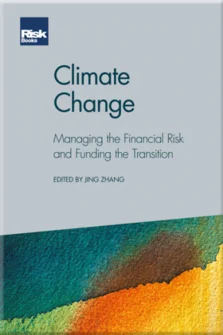Climate finance post-COP26
Climate finance post-COP26
Foreword
Introduction
Sustainability for critical ecosystems: The future of risk management – more of the same or a new paradigm?
Climate change is a source of financial risk
The climate disclosure landscape in the finance sector
Green boxes? An overview of climate risk tools and analytics
Embedding climate change in financial metrics
Modelling climate physical risks
Climate-related stress-testing: Transition risks
Catastrophe risk modelling and climate change
Evidence-based climate stress testing
Climate risk drives a new paradigm in risk management
Incorporating climate change in asset allocation and portfolio construction
(Car)bon voyage: The road to low-carbon investment portfolios
Climate risk primer for community banks: Concepts and policies during a period of significant change
Next-generation analytics for climate finance
Climate finance post-COP26
Mobilising private funding
Ahead of the event, hopes were high that the 2021 UN Climate Change Conference in Glasgow (COP26) would be the “finance COP”, where a new, ambitious climate finance target would be agreed among countries – one that would help the global economy shift to a low carbon model and protect vulnerable nations from the physical effects of a heating planet. It was not to be. The parties to the United Nations Framework Convention on Climate Change (UNFCCC) did not embed an updated dollar amount of climate finance to be delivered in the final agreement reached at the conference, the Glasgow Climate Pact (UNFCCC, 2021g).
However, COP26 did set out a framework through which a future climate finance goal could be defined. It also engendered a series of new climate finance aspirations – in relation to climate adaptation, so-called “loss and damage”, climate opportunity, and the mobilisation of private sector resources. Furthermore, COP26 played host to a wide range of climate finance pledges and promises from private financial institutions, most significantly by the members of the Glasgow Financial Alliance for Net Zero (GFANZ) and the Race to Zero (RtZ) campaign.
This chapter will discuss
Copyright Infopro Digital Limited. All rights reserved.
As outlined in our terms and conditions, https://www.infopro-digital.com/terms-and-conditions/subscriptions/ (point 2.4), printing is limited to a single copy.
If you would like to purchase additional rights please email info@risk.net
Copyright Infopro Digital Limited. All rights reserved.
You may share this content using our article tools. As outlined in our terms and conditions, https://www.infopro-digital.com/terms-and-conditions/subscriptions/ (clause 2.4), an Authorised User may only make one copy of the materials for their own personal use. You must also comply with the restrictions in clause 2.5.
If you would like to purchase additional rights please email info@risk.net











